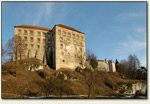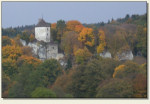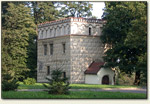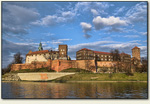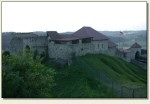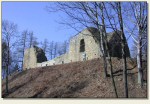Search
Alphabetical index
a palace in Wilanów
Babice
Bagieniec
Baranów Sandomierski
Barciany
Bardo
Barwałd Górny
Baszków
Bąkowa Góra
Besiekiery
Będzin
Białaczów
Białawoda
Biecz
Biedrzychowice
Bielsko-Biała
Bierutów
Bobolice (Lower Silesian province)
Bobolice (Silesia Province)
Bobrowniki
Bobrów
Bobrów Castle
Bochotnica
Bodzentyn
Bolczów Castle
Bolesławiec (Łódz Province)
Bolków
Bolmin
Borów Polski
Borysławice Zamkowe
Borzygniew
Bożków
Brok
Bronów
Brzeg
Bychawa
Byczyna
Bydlin
Bytów
Chełmo
Chęciny
Chlewiska
Chobienia
Chocianowiec
Chocianów
Chocz
Chojnik Castle
Chojnów
Chudów
Chwarszczany
Ciechanowice
Ciechanów
Ciepłowody
Cieszków
Cieszyn
Cisy Castle (of the Cis family)
Czarny Bór
Czchów
Czemierniki
Czerna
Czernina
Czersk
Częstochowa
Człuchów
Czoch Castle
Czorsztyn
Czyżów Szlachecki
Decjusz’s Villa
Dęblin
Dębno
Dobczyce
Dobra
Domanice
Dunajec Castle
Dzierżoniów
Dzietrzychowice
Dziewin
Frombork
Frydman
Giebułtów
Głogów
Głogówek
Gniew
Gniewoszów
Gola
Gola Dzierżoniowska
Golczewo
Golub-Dobrzyń
Gołuchów
Gorzanów
Gościszów
Góra
Górka Castle
Grodno Castle
Grodziec (Lower Silesia Province)
Grodziec (Silesian Province)
Grodziec Castle
Gryf Castle
Gryfów Śląski
Grzędy (Wojaczów)
Grzmiąca
Henry's Castle
Iłża
Janowice Wielkie
Janowiec
Jawor
Jelcz-Laskowice
Jelenia Góra
Jelenia Góra-Sobieszów
Jeżów (Wilczyska)
Jędrzychów
Kamieniec
Kamieniec Ząbkowicki
Kamienna Góra
Karpień Castle
Karpniki
Karpno (Lądek Zdrój)
Kazimierz Dolny
Kąty Wrocławskie
Kętrzyn
Kliczków
Kłaczyna
Kłodzko
Koło
Konradów Castle
Kozienice
Kozłówka
Koźmin Wielkopolski
Kożuchów
Kórnik
Kraków
Kraków
Kraków – Branice
Krasków
Krąg
Krobielowice
Krosno Odrzańskie
Krupe
Krzyżtopór Castle
Książ Castle
Książ Wielki
Kurozwęki
Kwidzyn
Lanckorona
Legnica
Lidzbark Warmiński
Lipa
Lipowiec Castle
Liw
Lubin
Lublin
Lubliniec
Lwówek Śląski
Łęczyca
Łodygowice
Łupki (Wleński Gródek)
Maciejowa (Jelenia Góra)
Malbork
Melsztyn
Melsztyn Castle
Mieroszów
Międzygórz
Międzylesie
Międzyrzecz
Mirów
Mirów Castle
Modła
Mokrsko Górne
Myślenice
Nawojowa
Nidzica
Nieborów
Niedzica
Niesytno Castle
Nowy Dwór Castle
Nowy Jasiniec
Nowy Sącz
Nowy Wiśnicz
Ogrodzieniec Castle
Ojców
Oleśnica
Oleśnica Mała
Olsztyn (Silesian Province)
Olsztyn (Warmia-Masuria Province)
Oława
Opole
Oporów
Ostróda
Ostrzeszów
Oświęcim
Otmuchów
Owiesno
Panków
Papowo Biskupie
Pastuchów
Pęzino
Pieskowa Skała
Pieszyce (Rościszów)
Piotrowice Świdnickie
Płakowice
Płonina
Podskale Castle
Podzamcze
Podzamcze Piekoszowskie
Proszówka
Przezmark
Przymiłowice Castle
Pszczyna
Rabsztyn
Raciążek
Radosno Castle
Radzyń Chełmiński
Rakowice Wielkie 1
Rakowice Wielkie 2
Reszel
Rogowiec Castle
Rogów Sobócki
Rudnica
Rudno
Rybnica
Rybnica Leśna
Rytro
Rząsiny
Sędziszowa
Siedlęcin
Siewierz
Skała
Słupice
Służejów
Small Wawel
Smoleń
Sobota
Sobótka - Górka
Sobótka (Ślęża Mountain)
Sokolec Castle
Sosnówka Dolna
Sośnicowice
Stadnicki’s Palace
Stara Kamienica
Stara Kraśnica
Stary Książ Castle
Stolec
Stoszowice
Stoszów
Sucha
Sucha Beskidzka
Szreńsk
Szydłowiec
Szydłów (Świętokrzyskie Province)
Szymbark (Lesser Poland Province)
Szymbark (Warmian-Masurian Province)
Świdnica
Świecie (Kuyavian-Pomeranian Province)
Świecie (Lower Silesia Province)
Świny
Tarnowiec
Tenczyn Castle
The Barwałd Castle
The Szczerba Castle
Toszek
Tropsztyn Castle
Trzciniec
Trzebień
Ujazd (Świętokrzyskie Province)
Uniejów
Uraz
Wałbrzych
Wałbrzych
Wałbrzych
Warmątowice Sienkiewiczowskie
Warszawa
Warta Bolesławiecka
Wawel Castle
Wąsosz
Wiadrów
Wielkie Trzcińsko
Wieruszyce
Witków
Witostowice
Wleń Castle
Wojanów
Wojcieszów
Wojnowice
Wolibórz (Garncarz Mountain)
Wolibórz (Jodłownik, Zamkowa Mountain)
Wołów
Wrocław (Armory)
Wrocław (Leśnica)
Wrocław (Ostrów Tumski)
Wrocław (University of Wrocław)
Wronin Castle
Wronów (Ronow) Castle
Wysoka
Wytrzyszczka
Zagórze Śląskie
Zapusta (Rajsko)
Ząbkowice Śląskie
Ziębice
Złoty Stok
Żary
Żelazno
Żmigród
a palace in Wilanów
Babice
Bagieniec
Baranów Sandomierski
Barciany
Bardo
Barwałd Górny
Baszków
Bąkowa Góra
Besiekiery
Będzin
Białaczów
Białawoda
Biecz
Biedrzychowice
Bielsko-Biała
Bierutów
Bobolice (Lower Silesian province)
Bobolice (Silesia Province)
Bobrowniki
Bobrów
Bobrów Castle
Bochotnica
Bodzentyn
Bolczów Castle
Bolesławiec (Łódz Province)
Bolków
Bolmin
Borów Polski
Borysławice Zamkowe
Borzygniew
Bożków
Brok
Bronów
Brzeg
Bychawa
Byczyna
Bydlin
Bytów
Chełmo
Chęciny
Chlewiska
Chobienia
Chocianowiec
Chocianów
Chocz
Chojnik Castle
Chojnów
Chudów
Chwarszczany
Ciechanowice
Ciechanów
Ciepłowody
Cieszków
Cieszyn
Cisy Castle (of the Cis family)
Czarny Bór
Czchów
Czemierniki
Czerna
Czernina
Czersk
Częstochowa
Człuchów
Czoch Castle
Czorsztyn
Czyżów Szlachecki
Decjusz’s Villa
Dęblin
Dębno
Dobczyce
Dobra
Domanice
Dunajec Castle
Dzierżoniów
Dzietrzychowice
Dziewin
Frombork
Frydman
Giebułtów
Głogów
Głogówek
Gniew
Gniewoszów
Gola
Gola Dzierżoniowska
Golczewo
Golub-Dobrzyń
Gołuchów
Gorzanów
Gościszów
Góra
Górka Castle
Grodno Castle
Grodziec (Lower Silesia Province)
Grodziec (Silesian Province)
Grodziec Castle
Gryf Castle
Gryfów Śląski
Grzędy (Wojaczów)
Grzmiąca
Henry's Castle
Iłża
Janowice Wielkie
Janowiec
Jawor
Jelcz-Laskowice
Jelenia Góra
Jelenia Góra-Sobieszów
Jeżów (Wilczyska)
Jędrzychów
Kamieniec
Kamieniec Ząbkowicki
Kamienna Góra
Karpień Castle
Karpniki
Karpno (Lądek Zdrój)
Kazimierz Dolny
Kąty Wrocławskie
Kętrzyn
Kliczków
Kłaczyna
Kłodzko
Koło
Konradów Castle
Kozienice
Kozłówka
Koźmin Wielkopolski
Kożuchów
Kórnik
Kraków
Kraków
Kraków – Branice
Krasków
Krąg
Krobielowice
Krosno Odrzańskie
Krupe
Krzyżtopór Castle
Książ Castle
Książ Wielki
Kurozwęki
Kwidzyn
Lanckorona
Legnica
Lidzbark Warmiński
Lipa
Lipowiec Castle
Liw
Lubin
Lublin
Lubliniec
Lwówek Śląski
Łęczyca
Łodygowice
Łupki (Wleński Gródek)
Maciejowa (Jelenia Góra)
Malbork
Melsztyn
Melsztyn Castle
Mieroszów
Międzygórz
Międzylesie
Międzyrzecz
Mirów
Mirów Castle
Modła
Mokrsko Górne
Myślenice
Nawojowa
Nidzica
Nieborów
Niedzica
Niesytno Castle
Nowy Dwór Castle
Nowy Jasiniec
Nowy Sącz
Nowy Wiśnicz
Ogrodzieniec Castle
Ojców
Oleśnica
Oleśnica Mała
Olsztyn (Silesian Province)
Olsztyn (Warmia-Masuria Province)
Oława
Opole
Oporów
Ostróda
Ostrzeszów
Oświęcim
Otmuchów
Owiesno
Panków
Papowo Biskupie
Pastuchów
Pęzino
Pieskowa Skała
Pieszyce (Rościszów)
Piotrowice Świdnickie
Płakowice
Płonina
Podskale Castle
Podzamcze
Podzamcze Piekoszowskie
Proszówka
Przezmark
Przymiłowice Castle
Pszczyna
Rabsztyn
Raciążek
Radosno Castle
Radzyń Chełmiński
Rakowice Wielkie 1
Rakowice Wielkie 2
Reszel
Rogowiec Castle
Rogów Sobócki
Rudnica
Rudno
Rybnica
Rybnica Leśna
Rytro
Rząsiny
Sędziszowa
Siedlęcin
Siewierz
Skała
Słupice
Służejów
Small Wawel
Smoleń
Sobota
Sobótka - Górka
Sobótka (Ślęża Mountain)
Sokolec Castle
Sosnówka Dolna
Sośnicowice
Stadnicki’s Palace
Stara Kamienica
Stara Kraśnica
Stary Książ Castle
Stolec
Stoszowice
Stoszów
Sucha
Sucha Beskidzka
Szreńsk
Szydłowiec
Szydłów (Świętokrzyskie Province)
Szymbark (Lesser Poland Province)
Szymbark (Warmian-Masurian Province)
Świdnica
Świecie (Kuyavian-Pomeranian Province)
Świecie (Lower Silesia Province)
Świny
Tarnowiec
Tenczyn Castle
The Barwałd Castle
The Szczerba Castle
Toszek
Tropsztyn Castle
Trzciniec
Trzebień
Ujazd (Świętokrzyskie Province)
Uniejów
Uraz
Wałbrzych
Wałbrzych
Wałbrzych
Warmątowice Sienkiewiczowskie
Warszawa
Warta Bolesławiecka
Wawel Castle
Wąsosz
Wiadrów
Wielkie Trzcińsko
Wieruszyce
Witków
Witostowice
Wleń Castle
Wojanów
Wojcieszów
Wojnowice
Wolibórz (Garncarz Mountain)
Wolibórz (Jodłownik, Zamkowa Mountain)
Wołów
Wrocław (Armory)
Wrocław (Leśnica)
Wrocław (Ostrów Tumski)
Wrocław (University of Wrocław)
Wronin Castle
Wronów (Ronow) Castle
Wysoka
Wytrzyszczka
Zagórze Śląskie
Zapusta (Rajsko)
Ząbkowice Śląskie
Ziębice
Złoty Stok
Żary
Żelazno
Żmigród
Kraków - Decjusz’s Villa
Driving directions:
Finding Cracow ought not to be a trouble to anyone. Through the center of the town runs the road no 7, which in the North leads to Warsaw, while in the South to Chyżne. Keeping down the road no 7 you need to reach the Cracovia hotel in the very middle of the town. It stands by the Błonie park, at the crossroads of Piłsudskiego and Focha Streets as well as Mickiewicza and Krasińskiego Avenues. In that spot you have to turn into Focha Street and drive all the way long down it (driving from the South you must do "a safety-pin circle" as the turn to the left is forbidden). Focha Street develops after 1km into Królowej Jadwigi St., along which you should drive straight on through the next 2-3 km. In a certain moment there is a turn left to the zoo (a signpost) and there begins 28 Lipca 1943r. St. You need to turn into it and drive straight ahead. On a slight height a street turns tightly to the right, and then sharply to the left. Precisely on the peak of the turn to the left, there is a gateway to Decjusz’s palace opposite.
Historical outline:
First references to the estate in Wola Chełmska originate in the XIVth cent., whereas in 1445 for the first time occured a piece of information that in this spot stood a defensive manor. It was later confirmed by Jan Długosz in his chronicles. In 1526 the manor became Justus Decjusz’s property, a king Zygmunt Stary’s secretary. A new owner converted the manor giving it a nature of palace, and also established a garden, which is now styled as Decjusz’s park. At the start of the XVIIth cent. the estate came into hands of Lubomirski family, who carried out a following conversion. In the next centuries no significant construction works were conducted in the palace and only the XIXth century brough about subsequent conversions and simultaneously gave the palace an ultimate shape. In the beginning of the XXth cent. a neglected building started to deteriorate. In the time of the World War I the army was garrisoned in there, and during the World War II, Hitler’s police. After the war the palace served to different state institutions until the 70s of the XXth cent. when it fell into a total dilapidation. Only a reconstruction from the 90s restored a former splendor of the building.
Gratefulness to curator of the Wawel castle for rendering materials on the subject of Decjusz’s palace available.
Pictures:
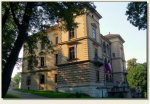
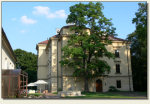
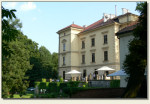

Nearest castles:
Polish castles - homepage
© 2009-2025 Bartosz Jastrzębski











